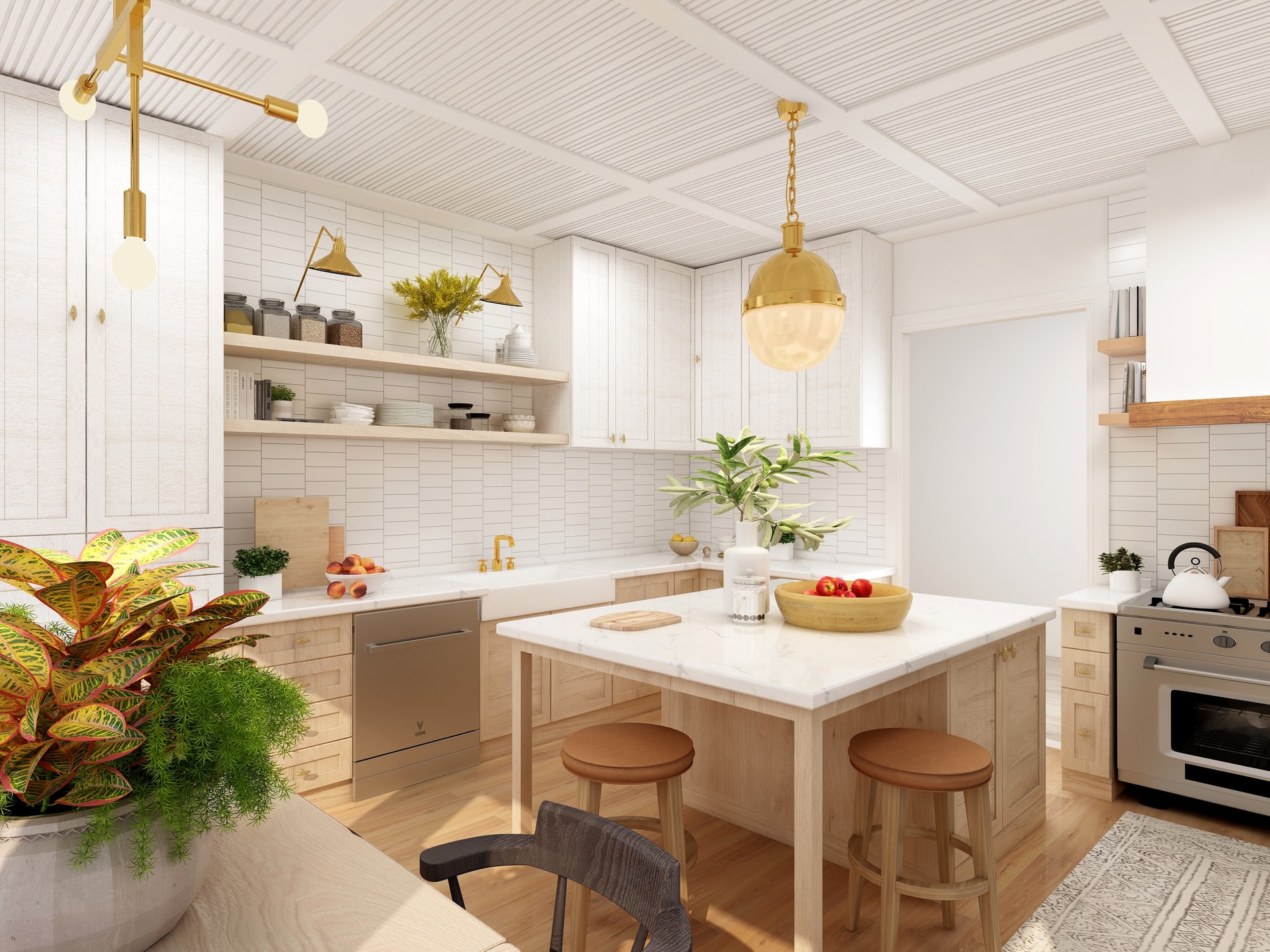Installing new kitchen cabinets can be exciting! Kitchen cabinets are the base of your entire kitchen, so replacing them is 50% of an entire kitchen remodel. While getting new cabinets is exciting, bringing them home is a whole separate beast. How does one go about kitchen cabinet replacement? The kitchen cabinet pros have broken it down to 7 easy steps for you.
1. Out with the Old
Step one is demolition! Before you can get your new cabinets put in, you have to remove the old ones. If you’re not particularly handy with home renovation, we recommend you get professional help with this.
Removing old kitchen cabinets can be done carefully, but it takes significantly longer and isn’t worth the effort if they’ll be going into the dumpster anyway. For that reason, demolition is the answer. Ensure any appliances you intend to keep as well as any windows are covered by something sturdy to protect them. Exercise precautions, such as wearing safety goggles and gloves. Then, get out your trusty sledgehammer and demo away at any part of your cabinets that you want gone. It’s harder than it looks and takes longer than you think, so prepare ahead.
2. In with the New
Next up is bringing your new cabinets to their new home. This will require a trailer or truck of some kind. You may be able to transport them with a pickup but, for full kitchen replacements, we recommend a rental truck or large trailer.
Remember to remove all debris from the kitchen before bringing in the new cabinets. You don’t want any leftover wood, screws, or nails lying around on the floor. Any appliances will need to be moved to another room temporarily or removed entirely to allow for space to maneuver the new cabinetry.
3. Cabinet Installation
Cabinet installation is quite complicated. We’ll break it down into its basic steps, but to ensure each step is done properly, you’ll want to read a full guide.
- Inspect your cabinets for damage before installing them. Any damaged parts should be replaced before installation starts, to avoid undoing your work.
- Find the high point in your kitchen floor. Most kitchen floors aren’t level after years of use. Knowing which part is highest is important. This is because you’ll want to align the bottoms of your cabinets with that point. Gaps between the cabinets and low points can be filled, whereas starting at a low point would mean cutting the bottom of cabinets to sit at the high points.
- Mark out the top of lower cabinets and bottom of wall cabinets.
- Find your wall studs for use in anchoring cabinets.
- Start with the corner cabinets and then attach additional cabinets to those already installed.
4. Countertop Installation
Once your cabinets are in place, you can start on countertop installation. This is another complicated process which warrants its own guide. There are many things to account for, such as shimming the countertop to ensure it’s level, securing the countertop to the cabinets, and more.
5. Sink Installation
Sink installation comes next. This requires plumbing knowledge as well as general DIY knowledge. There are full guides available for this process as well. You’ll need to install the sink into the countertop, install faucet hardware, connect the water line, and seal the sink to the counter to prevent leaking and mold.
6. Crack Sealing
Once the countertop and sink are in place, use caulk to seal along the back of the countertop and along the edge of the sink. This will prevent water from running behind or beneath the countertop. This prevents long-term mold issues and water damage.
7. Flooring Replacement
Finally, if you’ve installed new cabinets, your flooring will probably no longer fit properly around the cabinets. Replacing your flooring means adjusting to the size of your new cabinetry. Don’t forget to caulk along the edge of your kitchen flooring and cabinetry to protect against future spills and leaks.

